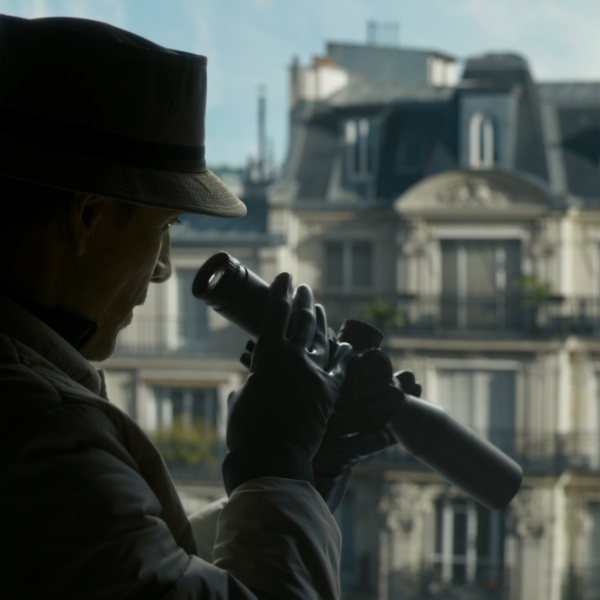
It’s sort of amazing how dexterous the “Fast and the Furious” franchise has been. Originally conceived as a kind of hot rod version of “Point Break,” directed by the perpetually midlife crisis-gripped Rob Cohen, complete with a trashy title lifted from an ancient American International Pictures cheapie, it has evolved over the years, with each successive sequel equipping the original concept of a sturdy undercover cop (Paul Walker) who flirts with the dark side of underground car racing (led by Vin Diesel) with new flourishes. John Singleton helmed the sequel, “2 Fast 2 Furious” and turned it into a live action anime (for better or worse it was a stylistic precursor to the Wachowskis‘ “Speed Racer“), while current franchise shepherd Justin Lin crafted a nifty “American Graffiti“-style one-off in “Fast and the Furious: Tokyo Drift,” before returning all the principles to the series for the back-to-basics revenge mode of “Fast & Furious.”
So the question with the new, fuck-coming-up-with-a-creative-title “Fast Five” (again directed by Justin Lin) is where can the series go now? Well, it turns out that all of the fast cars and scantily clad women are zooming into the big budget action adventure realm, in a heist movie with enough fast cars and property damage to make Michael Bay weep.

The new ‘Fast’ begins where the last entry left off – with Dominic Toretto (Diesel) being sentenced to a long stint in a federal prison. Of course, as the prison bus races down the open highway, a pair of muscle cars intercept it, driven by Brian O’Conner (Walker), former federal agent and now full-time bad guy and Dom’s sister Mia (Jordana Brewster), who is also O’Conner’s love interest. It’s a great, gripping opening sequence that ends in a spectacularly over-the-top bus crash.
After the title card, we resume action in Rio, where a neurotic, colorful bird… wait, wrong movie. But “Fast Five” really does take place in Rio. After a robbery goes wrong and leaves several agents dead (again, it’s a really wonderfully staged action piece that involves cars being manually removed from a moving train), our huggable criminals are forced to recruit a host of old faces (Tyrese Gibson and Ludacris from “2 Fast 2 Furious,” Sung Kang from “Tokyo Drift,” and Gal Gadot, Tego Calderon and Don Omar from “Fast & Furious”) to strike back at the drug kingpin (Joaquim de Almedia, channeling his rush of similarly villainous roles from the ’90s) who set them up. It’s sort of fun watching the characters from the previous movies bump into each other, even if the entire time we were wondering what the chronology of the movies is supposed to be, since Kang died in “Tokyo Drift,” which was a few movies ago. To pass the time we just stared at Gadot.
Of course, it’s not enough to just have a drug kingpin on your case, so they’ve also brought in Dwayne “Pimps Don’t Commit Suicide” Johnson as Hobbs, a ruthless Diplomatic Security Service agent, who wants to bring the boys in. Johnson, always a formidable screen presence, looks like he’s about to pop off the screen (and this movie isn’t in 3D) and he brings just the right mixture of over-the-top buffoonery and morally conflicted menace to the role. He growls every line, which, if you saw it like us on an IMAX screen, rattles your ribcage with every syllable.
The very-fast-and-loose plot involves the team trying to steal hundreds of millions of dollars from the kingpin, who has bribed the police to secret it away in their vault. It’s pretty dumb. What’s even dumber is that all of the characters, in the years in between sequels, apparently, have equipped themselves with an incredibly specific set of skills. Ludacris, in the second movie, was a glorified announcer, but here he’s an expert safe cracker. The explanation? “I had a life before you knew me,” a catchall bit of dialogue that’s repeated several times by several characters. Um, right.
“Fast Five” is too long, at 131 minutes it’s several subplots too long (Diesel’s relationship with a rookie cop could have been chopped completely), and way too violent. The earlier movies had a pulpy charge, with danger at the horizons of the races (or maybe hidden in the next smash-up), but here the violence is palpable, ugly, and abundant. Not only does it give the movie a seamy edge, but it also makes things considerably less fun, especially when Lin photographs them in faux gritty, “Hurt Locker“-mode.
But that’s not to say it’s a complete buzzkill either. What’s interesting is watching the way that Lin has to maneuver in and out of the limitations that the franchise has established, while attempting to push it into new territory. Sadly, the biggest casualty of the new heist movie format is the abolishment of any of the “car culture” color that helped give the previous movies (particularly “Tokyo Drift,” easily the best) some much-needed texture. The best example of this is the moment when the ambiguously gay duo of Diesel and Walker, have to get some new cars for the heist. They go to the local underground racing circuit and just look at the ringleader. Then we just cut to the two of them driving away in new cars. Lin seems to be saying, “We can’t SERIOUSLY show another car race five movies in.”
And, truth be told, it’s a refreshing honesty in this kind of big budget studio product. While the car sequences are few and far between, the movie climaxes in a seemingly endless chase sequence which has Walker and Diesel dragging a giant-ass bank vault through the streets of Rio, wiping out parked cars, unsuspecting storefronts, and every parking meter and street lamp in their path. It’s staged really well, showcasing Lin’s knack for special geography in action sequences (he also directed last year’s crack-shot paintball episode of “Community“) and editorial pacing. It’s after this sequence, too, that you feel like the transition from underground racing movie to heist movie has truly been earned and in the agreeably low rent world of the “Fast and Furious” franchise, that should be enough for a few more movies, at least. [B]




